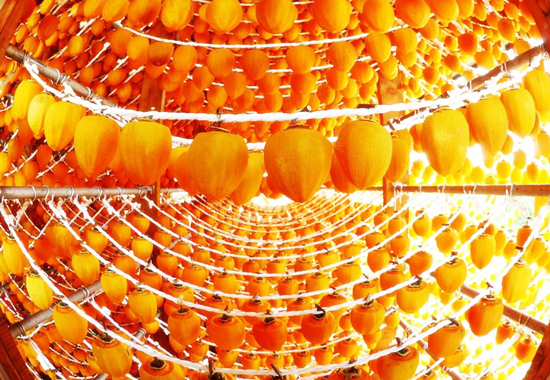


美しさとおいしさへのこだわりには一切妥協なし、 それが福島のあんぽ柿生産者の誇り

1.基本的な考え方
福島県では、ふくしまプライド。WEBサイトにおいて提供するサービス(WEBサイト上での情報提供等)の円滑な運営に必要な範囲で、当サイトを利用される皆さまの情報を収集しています。収集した情報は利用目的の範囲内で適切に取り扱います。
2.Cookieポリシー
当サイトでは、サイト利便性の向上のためユーザーの「Cookie」及び類似技術を使用して情報を収集します。「Cookie」を有効にしてた状態で当サイトを閲覧した場合、「Cookie」の使用に同意頂いたものとみなします。このデータは匿名で収集され、個人を特定できる情報は含まれていません。
当サイトではサードパーティーCookieを使用する場合があります。
また、下記の「Cookie」設定をサイト利用者が行うことで「Cookie」の受信を拒否することが可能です。その場合、「Cookie」を利用している一部機能がご利用頂けない場合があります。
●「Cookie」設定方法
・GoogleChromeブラウザでの設定方法
・Microsoft Edgeブラウザでの設定方法
・Firefoxブラウザでの設定方法
・Safariブラウザでの設定方法
●広告配信の「Cookie」に関して
広告配信時の「Cookie」利用に関しては、下記の各サイトよりオプトアウトすることにより、機能を無効化することができます。
・Yahoo!
・Google
・Facebook
3.収集する情報の範囲
①当サイトでは、インターネットドメイン名、IPアドレス、当サイトの閲覧等の情報を自動的に収集します。
②当サイトでは、サイト利便性向上のためユーザーの「Cookie」を使用しております。
4.利用目的
「3.収集する情報の範囲」において収集した情報は、当サイトの利便性向上のため使用いたします。主な用途は下記となります。
・サイトアクセス解析による、利用分析のため
・サイトパフォーマンスの改善、利便性向上のため
・サイト利用者の「Cookie」利用に沿った広告配信のため
5.利用及び提供の制限
当県では、法令に基づく開示要請があった場合、不正アクセス、脅迫等の違法行為があった場合その他特別の理由のある場合を除き、収集した情報を3の利用目的以外の目的のために自ら利用し、又は第三者に提供いたしません。ただし、当サイトのアクセス情報、当県へのご提案・ご意見並びにこれらに関係する個人属性等の情報について、統計的に処理したデータ又はご意見等の公表をすることがあります。
6.安全確保の措置
当県は、収集した情報の漏えい、滅失又はき損の防止その他収集した情報の適切な管理のために必要な措置を講じます。なお、当サイトの運用については外部に委託することがありますが、委託先においても収集した情報の適切な管理のための必要な措置を講じます。
7.Google Analyticsの利用について
当サイトおよび当社が運営するサイト、アプリ(以下当社サービス)では、当社サービスの利用状況を把握するためにGoogle LLCが提供するGoogle Analytics並びにGoogleTagManager(以下Googleサービス)を利用しています。
Googleサービスはデータ収集のためにCookie並びに、Googleシグナルを使用します。この機能で収集されるデータには、個人を識別する情報は含まれません。
これらの機能は、Google アナリティクス オプトアウト アドオンを利用してオプトアウト(無効化)するかまたは、ブラウザの設定によりcookieを無効にすることでデータの収集を拒否することができます。お使いのブラウザの設定をご確認ください。
また、当社サービスではGoogle アナリティクスの広告向けの機能である「クロス プラットフォーム レポート、アナリティクス データに基づくリマーケティング リスト、広告レポート機能、ユーザー属性とインタレスト カテゴリ」等を利用する可能性があります。こちらも同様にオプトアウト(無効化)することが可能です。
当社サービスと、Google LLC.を含む第三者配信事業者は、ファーストパーティ Cookie(Google アナリティクスの Cookie など)または他のファーストパーティ ID とサードパーティCookieまたは他のサードパーティ ID を組み合わせ、 当サイトを訪れたユーザーの属性・興味・関心の分析に利用する可能性があります。
なお、Google Analyticsのサービス利用による損害については、当社は責任を負わないものとします。
Google アナリティクスおよびオプトアウトアドオンの詳細については、以下のリンクからご確認ください。
Google アナリティクス利用規約:https://marketingplatform.google.com/about/analytics/terms/jp/
Google社プライバシーポリシー:https://policies.google.com/privacy?hl=ja
Google アナリティクス オプトアウト アドオン:https://tools.google.com/dlpage/gaoptout/
8.適用範囲
本プライバシーポリシーは、ふくしまプライド。WEBサイトにおいてのみ適用されます。関係機関等における情報の取り扱いについては、それぞれの組織の責任において行われることになります。






























